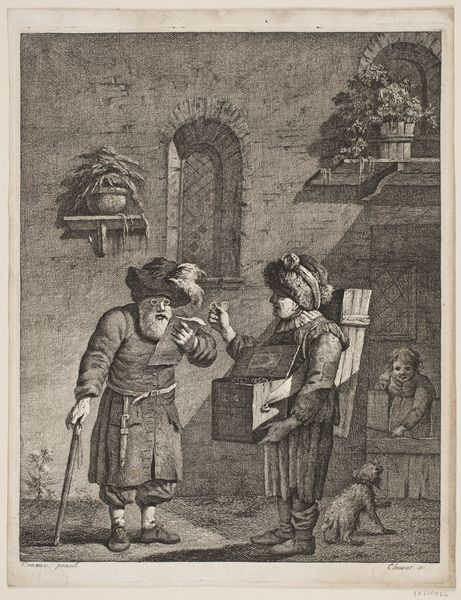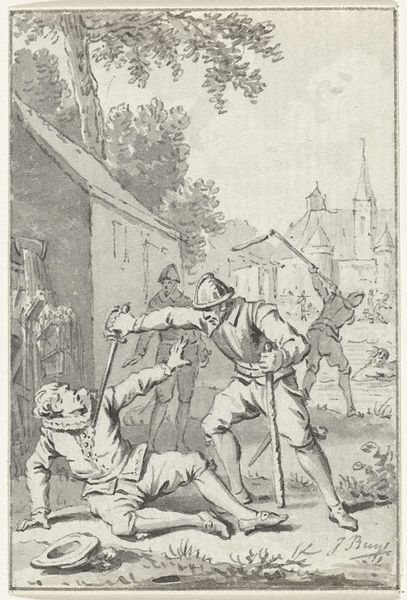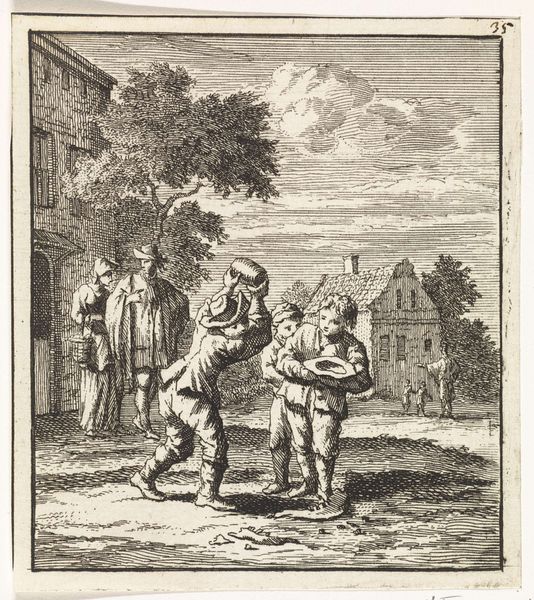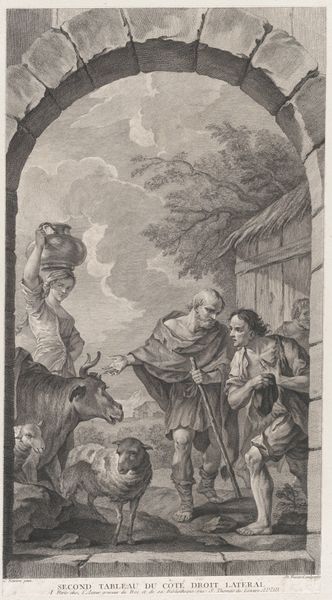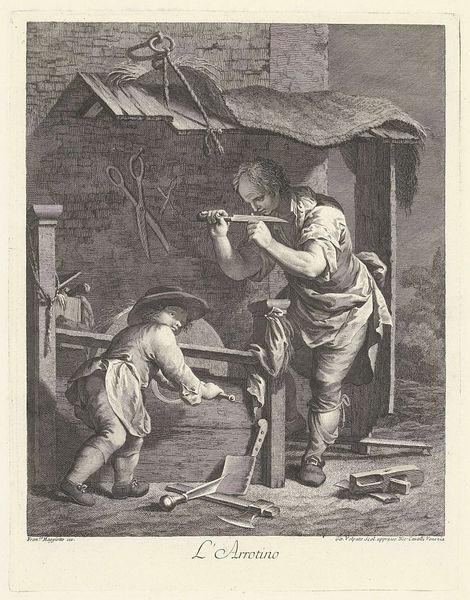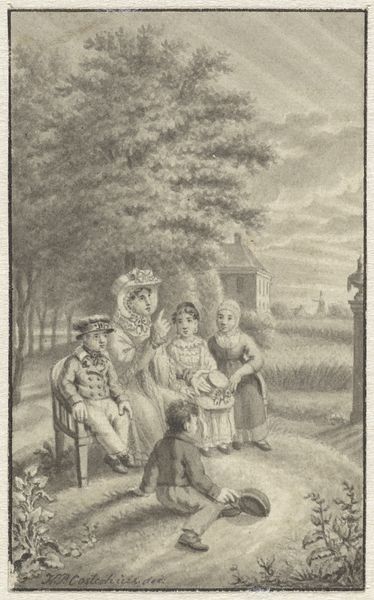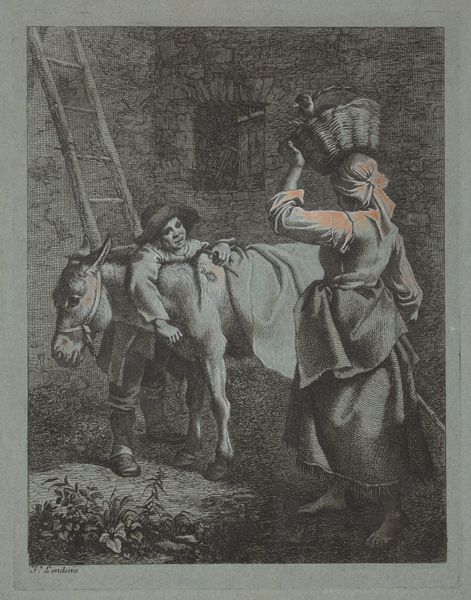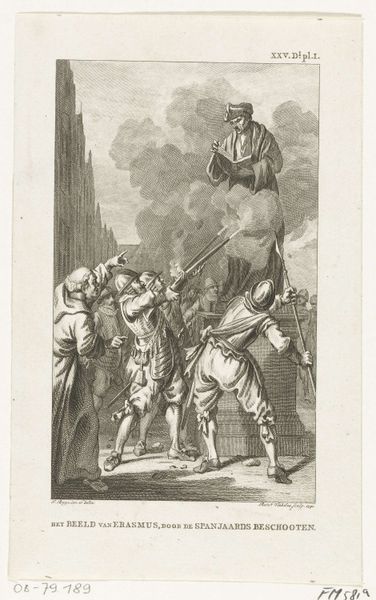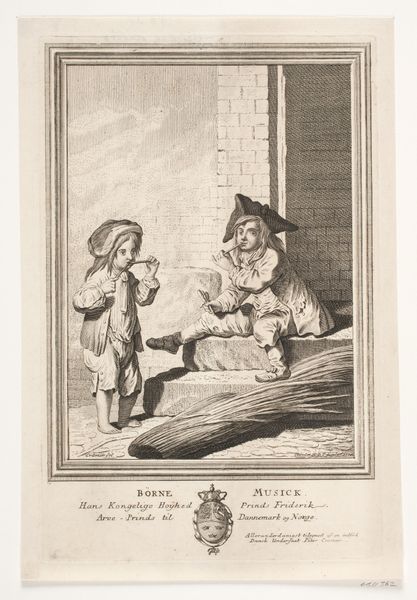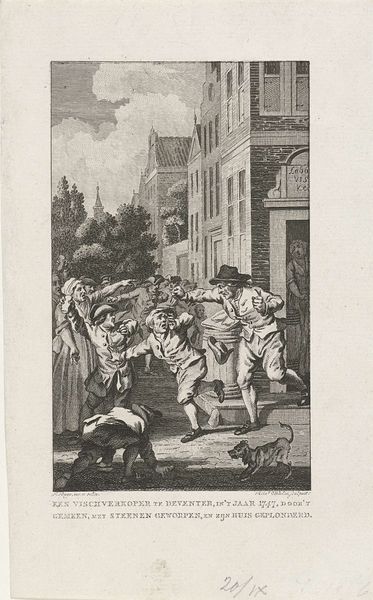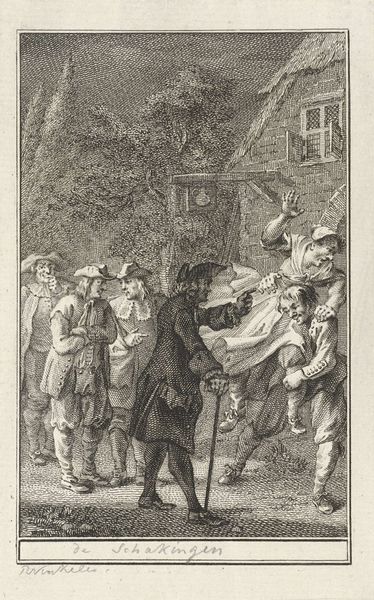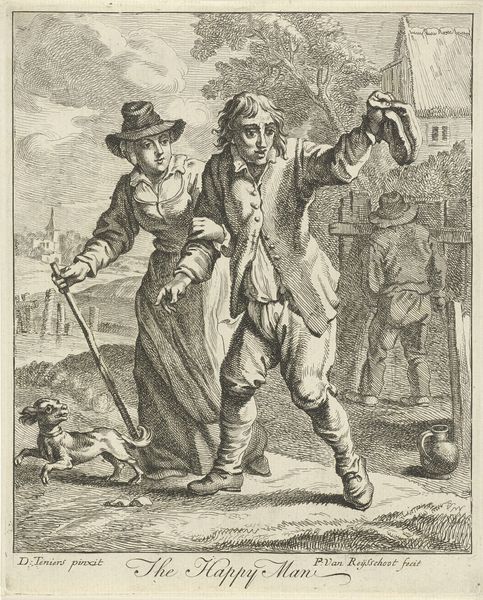
Dimensions: height 380 mm, width 292 mm
Copyright: Rijks Museum: Open Domain
Curator: Look at the texture in this engraving; it is quite compelling. Editor: Absolutely. It almost feels a bit melancholic, despite depicting what seems like a traveling performer and child entertainer. The muted tones create a sense of… what’s the word? Impermanence. Curator: Well, let me share some context. What you are seeing here is “The Street Performer,” an engraving from sometime between 1743 and 1803. The work is attributed to Giovanni Volpato. It offers a wonderful window into that era's popular culture, and the performance of identity through dress. Editor: Definitely. We see the layering of class performance right there. This itinerant figure, maybe offering momentary escapism through spectacle but also, perhaps inadvertently, highlighting the sharp economic stratification in Europe at the time. Look at how the costume functions, signaling some aspirational belonging and an intentional crafting of a performative persona. Curator: Notice the careful attention paid to details – the garments and instruments aren't just props; they speak to established symbolic codes, hinting at the life of the street performer figure. Even the dogs. One performing and one guarding and observing Editor: I also see the dynamics of labor here. The younger figure clearly acts as a junior partner in this enterprise, shadowing what may be his father or elder brother. The composition directs our gaze through these intergenerational relationships that reproduced the work performed on the streets, an insight to everyday historical existence and ways of earning in lower working class families. Curator: And Volpato's choice of medium… an engraving. Think of the skill and the traditional techniques employed. It is not an easy artistic production; it speaks to the laborious and rigorous training. Editor: It reminds me of Foucault’s arguments about bodies trained through repeated processes, how we come to embody both ability and social standing simultaneously through ingrained habits and performance. We are indeed looking at the relationship of performance of art and physical embodiment and labor. Curator: I’ll certainly look at engravings with renewed attention. The ways cultural narratives become etched— quite literally—into an image is fascinating. Editor: Exactly. It challenges us to delve below the image's surface and excavate the rich layers of lived experience that continue to reverberate through time.
Comments
No comments
Be the first to comment and join the conversation on the ultimate creative platform.
